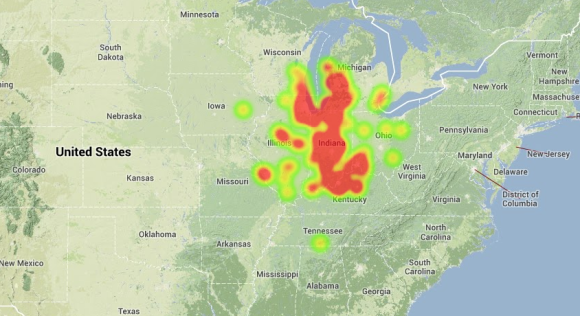Earthsky.org - 9/27/13, Deborah Byrd

This is a “heat map,” created by the number of sightings reported to the American Meteor Society. Map via AMS and Mike Hankey.
The American Meteor Society (AMS) reports that it has received over 400 reports of a large fireball (bright meteor) over the U.S. Midwest today (September 26, 2013). People in Ohio, Illinois, Indiana, Kentucky, Missouri and Wisconsin spotted the meteor around 7:05 a.m. CDT; that was local time for the sighting. Witnesses from reported a bright light moving across the morning sky. The estimated trajectory for the fireball took it nearly over Indianapolis.
September has been a busy month for sightings of bright fireballs, according to the AMS. This morning’s event marks the 13th fireball sighting with at least 25 witnesses, the most ever since the AMS started recording sightings online, they say.